This week, how to live longer and look younger with the science of ageing! We discover how repairing damage to DNA could prevent the diseases associated with old age, and find out how to keep your skin looking younger for longer. Also, doing just four things could add fourteen years to your life - so find out what they are, right here! Plus, how gene therapy could cure one from of blindness, how to get more distance from a tank of diesel and counting insects - how bees can count up to four, but not five. Also, in Kitchen Science, we explore the stretchy science of rubber bands!
In this episode
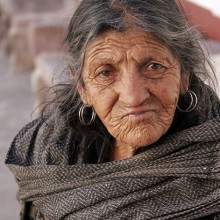
- Younger Looking Skin
Younger Looking Skin
with Patrick Bowler, British Association of Cosmetic Doctors
Meera - Whilst ageing is both a physical and psychological process, when many of us think about getting older we think of wrinkly sagging skin. So this week, I'm in Brentford in Essex in the home of Dr Patrick Bowler, fellow of the British Association of Cosmetic Doctors, to find out what happens to our skin as we age and if, as all the cosmetic companies promise, it's possible to reverse the effects of ageing...
Patrick - The skin is the largest organ in our body. We have a base layer, called the dermis, in which there are blood vessels and fat and nerves. Then there is a very important layer above that - the epidermis - which produces new skin cells constantly. These cells make their way to the surface and shed off in a 28 day cycle, or something like that.
Meera - So what happens to our skin as we age?
Patrick - There are many factors that cause our skin to age. There is a genetic factor, then there are environmental factors which are probably the most important. There are a number of changes that go on in the skin. The skin becomes thinner so if you took the extreme of a lady in her eighties or nineties and looked at the back of her hand the skin is almost translucent and you can see the blood vessels. We get pigment changes, age spots and the elastic tissue, a bit like the cement between bricks, and the foundation of the skin starts to reduce in strength. That is part of the problem in developing sagging skin and wrinkles. So the supporting structure of the skin starts to become less elastic.
Meera - I can imagine that a loss of elasticity can cause sagging, as the skin is less taught. What about the wrinkles, why do they happen?
Patrick - There are different types of wrinkles. If you look at the forehead for example or around the eyes where there is a lot of muscular movement. The muscular movement plus damaged, aged skin produces wrinkles. As we go further down the face to for example the cheeks and down into the jaw line and the neck, that is more due to loss of volume in the skin so you lose fat and elastic tissue and we therefore get sagging. In that sagging you get wrinkles. It's a bit like letting a balloon down quickly; you're left with that crinkly appearance
Meera - In our society today there is a wide range of products out there that people are resorting to in order to try and reverse these effects. What are these ingredients that are being used in the creams that are purely targeting people that are wanting to reverse their ageing?
Patrick - We had about 25 years ago a big breakthrough in skin treatments, where a form of vitamin A called a retinoid was actually shown to reverse some of the signs of ageing. That's pretty miraculous for that to be proven scientifically. It was in a very strong form of vitamin A which was quite irritating. At that time the cosmetic companies jumped up and down and thought that this was fantastic and that they would use this. They developed ingredients derived from vitamin A which are basically different types. Most of them are weak because if they increased the concentration then they would become irritating. Unfortunately you have to increase the concentration for them to be effective and a true anti-ageing effect. All the vitamins you see in over the counter products, like vitamin A, C and E (which are the common ones that we see) are going to have a positive effect, but are not going to be true anti ageing effects.
Meera - So, is the true way to have an anti-ageing effect then, to irritate the skin and then cause the skin to regenerate?
Patrick - With vitamin A, that is the case. The concept of irritating the skin on the surface makes the cells underneath react and produce newer fresher looking skin cells. In a single skin cell, and this always amazes me, there are something like 10,000 receptor for vitamin A. When vitamin A locks onto these receptors, certain things trigger off in the skin which affects cell division and other complex chemical cycles that go on. The vitamin A, retinoids in particular, have also been shown to stimulate collagen production in the dermis. This is very important because one of the effects of ageing skin is that we lose collagen and volume. So if we replace that in some way that is going to have a true anti-ageing effect. In summary it is not just the irritation: there are some more profound things going on deeper in the skin and in the cells that we don't really understand just yet.
Meera - What if people were to just increase vitamin A in their diet rather than applying it to their skin?
Patrick - Vitamin A, in particular if you take it orally can be toxic if you over do it. It can have quite serious effects on the liver. So I would usually advise my patients in this instance that it is good to treat the skin inside and out. So apply creams containing vitamins superficially and also ensure you have an adequate diet. If you don't think you do have an adequate diet then take a vitamin tablet as a fail-safe.
Meera - What should people be doing in order to help their skin in the long-term and just try to not maybe resort to cream?
Patrick - For most things moderation is the key. However looking after your skin there is one thing that is really important. You have to be very careful with the amount of sun exposure you have. To have in your moisturiser a sunscreen is probably the best tip that I can give you to keep your skin looking good.
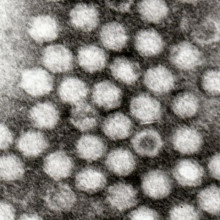
01:25 - Gene therapy holds hope for blindness
Gene therapy holds hope for blindness
This week researchers have taken a step closer to using gene therapy for treating a type of inherited blindness...
Artur Cideciyan from the University of Pennsylvania led a team who have been looking at therapies that aim to treat a rare form of blindness called Leber congenital amaurosis or LCA. Studies in animals have shown that it is a mutation in a particular gene called RPE65 that causes this disease. What it does is knock out part of a process in the eye called the retinoid cycle, which regenerates vitamin A, a critical step for converting light hitting the retina into nerve signals that are sent to the brain.
By using gene therapy to replace the RPE65 gene, researchers have been able to restore the vision in animals suffering from LCA. The therapy is based on a genetically modified virus which is injected into the eye and essentially delivers a "good" version of the gene that fills in the missing link of the retinoid cycle.
And the encouraging news is Cideciyan and his team have started trying out this gene therapy on people. These are just early stage clinical trials, but they have already shown that the treatment is safe to use and can lead to moderate improvement in vision.
Three patients with LCA were injected with the treatment and, after 30 days, all three had shown improvement in their eyesight.
It seems the therapy is increasing the activity of cone cells, the parts of the eye responsible for seeing colour, by up to 50 times. And that the activity of rods, the parts responsible for night vision, could increase by 63 thousand times.
While this is encouraging news, the results of the treatment are still far from perfect. One problem was that it took the patients a very long time to get accustomed to the dark. For people with normal vision it takes less than an hour to adapt to low light levels - but in the treated patients it took them up to eight hours.
So this might not be perfect, but it already holds some hope for the development of future treatments.

04:02 - More Distance for your Diesel...
More Distance for your Diesel...
Subjecting your diesel engine to a high voltage could improve the efficiency by 20% - which could save a lot of money on the forecourt!
Internal combustion engines are becoming more efficient with each generation of cars, but we're still a long way off perfection. Now, researchers at Temple University, Philadelphia, have found a way to make diesel engines more efficient by making the droplets of fuel injected into the engine much smaller.
A diesel engine works by spraying a fine mist of fuel into a chamber, where the heating effect of pressure from a rising piston causes it to burn. In the process of burning, the fuel and its products turn into gases and expand and this expansion pushes the piston back down, powering the vehicle. The smaller the fuel droplets when they are sprayed into the chamber, the more efficiently the fuel can be burned, and the more miles you get from a tank of fuel.
Writing in the journal Energy and Fuels, Rongjia Tao and colleagues report on an electrostatic device which could be fitted to a standard engine and subjects the fuel to a strong electric field shortly before it passes into the fuel injector. This gives each droplet of fuel a negative charge and, as like charges repel, the droplets then repel one another, and form a finer mist as they are sprayed into the combustion chamber. This makes the engine much more efficient, and improves fuel mileage significantly.
In lab tests, the team achieved 20% greater power than a traditional engine for the same fuel consumption rate and in real highway driving conditions, the device increased the fuel mileage from 32 to 38 miles per gallon, an increase of 18%. Even in more demanding conditions of driving in a city, the improvement of fuel mileage averaged at 12-15%. Also, as the device consumes only 0.1w of electrical power, the improvements in efficiency are not cancelled out by a large increase in electrical consumption.
The team have shown it works well on two engines so far, and are confident that it can be adjusted to work with existing engines as well as new ones, running on diesel and petrol and even things like biodiesel, petrol mixed with ethanol or even kerosene.
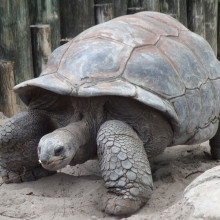
06:16 - Giant tortoises not gone yet
Giant tortoises not gone yet
This week saw the return of Galapagos Day, an annual event held by the Galapagos Conservation Trust and this year there was some good news: a species of giant tortoise that was thought to have gone extinct over a hundred years ago may in fact not be lost forever...
A team of scientists from Yale University in the States have extracted traces of DNA from specimens of extinct Galapagos tortoises kept in museums, and discovered that at a species that used to live on Floreana Island was genetically distinct from all the other giant tortoises.
The results of the study published in the PNAS journal this week by Giselle Ciccone and her colleagues might not be such ground breaking news, were it not for another discovery they made among tortoises still living in Galapagos - some of the close relatives of the extinct Floreana Island tortoises are still with us.
When Darwin visited the Galapagos Islands in 1835 he was inspired by the incredible giant tortoises which can grow to up to a quarter of a tonne and live for over a century. It wasn't so much their great size that wowed him, but the fact each island seemed to have its own species of tortoise - the isolation of the islands meant that different tortoises evolved subtle differences from each other.
But sadly, their great size and lack of speed has meant that giant tortoises have suffered from human greediness, with four out of 15 species going extinct. The Floreana tortoises are thought to have gone extinct within 15 years of Darwin's visit.
What Ciccone and her team have discovered is that some of the tortoises living on Isabela island are in fact a long lost relations of the extinct Floreana species - called Geochelone elaphantopus.
What probably happened is that somehow, a few Floreana tortoises found their way to Isabela, perhaps a whaling ship left them there realizing they had more food on board than they needed. And these visiting tortoises bred with the residents producing hybrids - now some of Isabela tortoises have half Floreana genes.
This means that even though there are no living Floreana tortoises, their genes do live on and there is potential that a careful breeding programme could restore them - one day perhaps - to their former glory. It would take an extremely long time, since giant tortoises take so long to breed but in theory, the living hybrid tortoises could be bred and selected so that they only possess the original floreana genes.
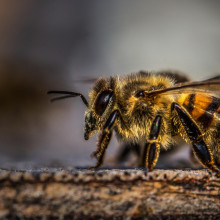
09:15 - Bees can count up to 4
Bees can count up to 4
Scientists have shown that bees can count up to 4!
Marie Dacke and Mandyam Srinivasan who carried out the work at the Australian National University in Canberra have published a paper in Animal Cognition describing a series of experiments to prove that the humble honeybee is numerically more sophisticated than some humans.
In an elegant series of experiments the duo trained bees to fly along a featureless tunnel past a series of identical yellow landmarks, behind one of which was always hidden a small sugary treat.
By varying the distances between the landmarks, changing the shape and size of the landmarks, and also obscuring the landmarks sequentially so the bees could only see them one at a time, the duo have cleverly shown that the bees must be totting up how many landmarks they've passed in order to reach their intended target.
The only slight snag is that the bees can't count up to more than four! Once the team started to hide the treat behind a fifth landmark, bee performance took a nose dive.
Dacke and Srinivasan think that the insects use their counting ability to help them to navigate.
By ticking off a few landmarks along the way and combining this with an internal measure of how far they've travelled this is probably how they get from A to "Bee"!

11:05 - From Breastmilk to Baby's Blood
From Breastmilk to Baby's Blood
with Pamela Bjorkman, Caltech
Ben - Now also in the news this week researchers at the Howard Hughes medical institute at Caltech have followed an antibody as it passes through the wall of the stomach. This must happen for mother to pass on immunity to a baby through breast milk. In order to see what happened they attached nano sized particles of gold to antibodies that they then fed to rats. Professor Pamela Bjorkman was leading the work and joins us now. Hi, Pamela.
Pamela - Hello
Ben - So Pamela, how did you actually do this? How did you see these antibodies passing through the stomach wall?
Pamela - Well, first we used a technique called electron tomography. Normally with electron microscopy, you take images of cells and you see their organelles. You can normally achieve nanometre resolution. So you can see membranes and other things like that. By attaching the nanogold particle to the antibody we could trace it as it was taken up by the intestinal cells. We could watch which parts of the inside of the cell it progressed as it was going across the cell.
Ben - Now, a lot of the time with these sorts of experiment people use something like a fluorescent tag which they attach to whichever chemical they are trying to follow. Would this have been possible or is it vital that you used this nano scale gold?
Pamela - A fluorescent tag wouldn't be visible in an electron microscope because what you need to see there is very electron dense particles. So the gold tags that we were using were actually 55 or 60 gold atoms that were attached. That is electron dense enough that with a little bit of an enhancement procedure we could see those. Every time we had a transport event we could visualise that by one of these gold tags. We were looking at single receptor bound to an antibody in each case. It was visible by the gold tag.
Ben - So once the antibody binds to the receptor how does it get through the cell? How does it push through?
Pamela - Well, it comes in through what is called receptor mediated endocytosis. It binds to its receptor which is on the side of the intestine it faces when milk comes into the gut. It binds there. It then goes inside to the cell, into these membranous compartments that are very strange shapes but they're tubes or they're like big spherical balls. It goes inside those and those are acidic and this receptor binds very tightly to the antibody at an acidic pH. These vesicles wander around inside the cell and then when they reach the side of the cell that faces the blood stream, which is where they eventually want to dump their cargo. These little tubules fuse with that membrane. Then they're exposed to the pH of blood which is slightly basic and at that pH the antibody rapidly falls off, enters the newborn bloodstream and the result is that it acquires its mother's antibodies.
Ben - So it's the difference in pH between inside your gut and inside your bloodstream that actually makes this a one-way process?
Pamela - Exactly.
Ben - So why is this so important, why do we need to transfer antibodies from breast milk to blood?
Pamela - It turns out that human babies don't develop fully functional immune systems until later. It's very helpful to them to have some of their mother's antibodies. It is like a path of immunisation. The mother vaccinates them with antibodies against whatever pathogens she encountered in her environment. That's directly relevant to what the baby will experience. It has been immunised by its mother.
Ben - Could this be the same mechanism through which things like HIV are transferred from mother to baby?
Pamela - HIV is transferred through breast milk but actually there is a bit of a technicality. Most of the types of antibodies that are in breast milk are not the types that are transferred by the receptor we were studying, in human breast milk anyway. We were studying the transfer of IgG antibodies. Most of the antibodies that are in human breast milk are IgA. Rodents transfer IgG through breast milk, humans transfer IgG before birth: mostly across the placenta. Much of the antibodies that humans acquire is before they are even born. It's by a transfer across the placenta. Then human foetuses swallow amniotic fluid and it is possible that they transfer maternal IgG to their bloodstream through the swallowing of this amniotic fluid that contains the mother's antibodies. I don't think that human babies actually acquire HIV through this mechanism.
Ben - Fantastic. Thank you ever so much Pamela. That was Professor Pamela Bjorkman from Caltech explaining how you can use gold or tiny particles of gold to shine a light on biological processes.
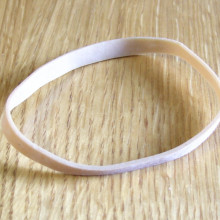
Heat Shrink! - Why rubber bands get shorter when you heat them.
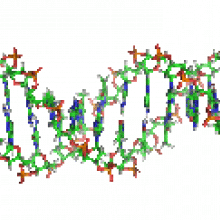
19:47 - Damaged DNA
Damaged DNA
with Steve Jackson, Gurdon Institute, University of Cambridge
Helen - Why don't we feel as young as our youngest cells? The answer could be the damage to our DNA due to exposure to radiation or toxins or just the copying errors when our DNA is replicated. Professor Steve Jackson joins us now from the Gurdon Institute here in Cambridge University. His team are trying to understand better how DNA becomes damaged, how this damage relates to disease and how to repair damaged genes. Hi Steve, thanks for coming on the Naked Scientists.
Steve - Hi
Helen - So how does DNA become damaged in the first place?
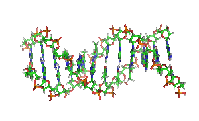 Steve - There are a tremendous number of ways that DNA can become damaged. We are all aware of the fact that if you sit in the sun too long the ultraviolet light can damage DNA, so chemicals can. Radiation use, for example in radiotherapy, can damage DNA. Actually the largest source of DNA damage is oxygen. About 2% of the oxygen we breathe actually gets converted into things called reactive oxygen species in the mitochondria in our cells. Some of that escapes. That, together with hydrolytic reactions catalysed by water are occurring all of the time in our cells, even if we are sitting in the dark away from everything else and not being exposed to any chemicals. The amazing thing is that we have around 1014 cells in our bodies and every cell in our body is sustaining around 100,000 lesions per day. Our bodies, even if you're not sitting in the sun and you're not exposing yourself to any other chemicals, are having to deal with somewhere in the region of 1018 to 1019 lesions per day.
Steve - There are a tremendous number of ways that DNA can become damaged. We are all aware of the fact that if you sit in the sun too long the ultraviolet light can damage DNA, so chemicals can. Radiation use, for example in radiotherapy, can damage DNA. Actually the largest source of DNA damage is oxygen. About 2% of the oxygen we breathe actually gets converted into things called reactive oxygen species in the mitochondria in our cells. Some of that escapes. That, together with hydrolytic reactions catalysed by water are occurring all of the time in our cells, even if we are sitting in the dark away from everything else and not being exposed to any chemicals. The amazing thing is that we have around 1014 cells in our bodies and every cell in our body is sustaining around 100,000 lesions per day. Our bodies, even if you're not sitting in the sun and you're not exposing yourself to any other chemicals, are having to deal with somewhere in the region of 1018 to 1019 lesions per day.
Helen - Is that lesions in the DNA?
Steve - That's damage to DNA, yes.
Helen - So our DNA is being damaged all the time, but why does this now lead to disease?
Steve - Well, fortunately the vast majority of that DNA damage gets detected very rapidly by certain specialised proteins in our cells and gets repaired. So the vast majority of that DNA is repaired. Some of it isn't, it escapes these surveillance pathways. That damaged DNA, when it eventually is put back together again, often has errors which are mutations. Those mutations can mean that the cell isn't working in the way that it should.
Helen - You mentioned the surveillance, now this sounds like there is something fantastic going on in our bodies to try and undo this damage that is happening to us on a daily basis. So how can we actually repair our own DNA, what's going on inside the cells?
Steve - Well if we didn't have these surveillance pathways we wouldn't last very long. The fact is that most of the DNA damage that is occurring is repaired. What my lab and other labs in this area are working on is trying to understand how these "molecular policemen" work. Really they are molecular policemen that patrol the cell looking around for damage, not doing very much, but when they stumble across damage, as it is occurring all the time, they jump on the DNA. They then send out signals for the cell, alert signals for the cell to stop doing things such as dividing while the damage is there, then hopefully repairing that DNA damage in a way that doesn't generate mutations. These pathways work very well but occasionally they go wrong and that can lead to mutations that can contribute to diseases such as cancer and we believe it can also contribute to ageing.
Helen - You touched on the idea that we might be able to do something like use these mechanisms of repair ourselves and actually promote that kind of repair. Is that something that we're actually seeing happening already or are these just still ideas to mimic those actual repair mechanisms?
Steve - I think ultimately it should be possible to find ways of improving these surveillance/repair mechanisms. If we could find ways of improving them I would place a bet that it would slow down at least some aspects of ageing, maybe not all of them. The problem is that our cells are working very efficiently already so trying to find a way to make them work even better is difficult. One very interesting idea is that many pathways, just like the police forces or other surveillance systems, can work in a latent capacity or can be induced. There is a growing body of data now showing that a little bit of stress to the cellular systems can hyper-activate these repair pathways. So I think one of the major opportunities might be finding ways of boosting our defence systems by making ourselves in this higher state of alert. If we could do that or find drugs or other ways of bringing that about then that might actually slow down ageing at a cellular level.
Helen - So if we could tease ourselves into thinking there is a little bit of damage going on perhaps, or mimic that, then the cells might actually kick in that repair mechanism and help repair the damage to the DNA.
Steve - Absolutely. I think even some things that we know might contribute to slowing down ageing, at least in some regards, such as exercise, might be exerting some of their influences by stressing our cells and we know that stress tends to induce these repair and other pathways.
Helen - So a little bit of stress might be good for us.
Steve - That's what I keep saying to my students.
Helen - So do you think we could ever stop ageing altogether, or is this something that is such an inherent part of life that we're never going to overcome the fact that DNA suffers so much damage as we live our daily lives?
Steve - I think it will be very difficult to find ways of reversing age, or even stopping it. As I pointed out earlier on, much of the DNA damaging chemicals, such as oxygen and water, are intrinsic to life. It's very difficult to have a system that is 100% accurate in terms of repairing damage. Having said that we know that different mammals can live tremendously different lengths of time so it is possible for an organism to develop in a way over evolution to live much longer or live less long. I think if we understand all these pathways and also understand why some organisms live longer than others we may be able to find ways of tweaking the system to make us live longer.
Helen - If it isn't just a case of living longer but perhaps improving certain parts of our lives. Is there anything in particular that damage DNA - apart from diseases - are there any other aspects that we can work at improving through maybe mimicking these repair mechanisms? Are there other aspects of ageing in the body that are really the crucial things that we would want to look at?
Steve - I think it's very easy to think about ageing as a superficial thing such as the greying of your hair or the wrinkling of your skin. The reality is the ageing has a range of diseases associated with it. That includes neuro-degeneration, cardio vascular disease and cancer. We know from working with a number of labs including ours that defects, or problems with these DNA repair mechanisms, can lead to cancer. We also know that they can lead to neuro-degenerative disease and there is growing data suggesting it can contribute to cardiovascular disease. So I think ageing shouldn't be thought of as a superficial issue. Ageing occurs in our organs and our brains and I think these are the kind of diseases that we might be thinking about alleviating
Helen - Thanks Steve, that's Professor Steve Jackson from Cambridge University explaining how stopping DNA from getting damaged could lead to longer, healthier lives.
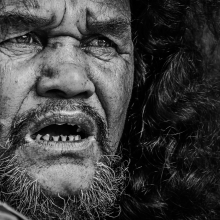
26:34 - Why does hair grow out of control in older people?
Why does hair grow out of control in older people?
We put this question to Des Tobin, Professor of Cell Biology, University of Bradford...
Hair growth is very susceptible to hormones, to the so-called sex steroid hormones: principally oestrogens and androgens. The dominant hormone for males is in the androgen category, particularly testosterone.
Surprisingly, the levels of testosterone continue to increase with age up until the age of 70. Since most male hair is responsive to androgens, with age and with increasing hormone levels you tend to get more and more vigorous hair growth, particularly in the areas that were perhaps not as robust as when the individual was younger. For example, on the nose, ears and on their eyebrows.
The nose and the ears have got thousands and thousands of hairs. They're so small you can't see them. In fact, the tip of the nose is the hairiest part of the body in terms of density of hairs per unit area.
With time, these tiny - formerly invisible - hairs can be stimulated with these male hormones, which go up with age, and can therefore become more cosmetically visible with age. The same applies for the eyebrows and for the ears.
In women, oestrogen levels drop after menopause, and their lower levels of testosterone become more engaged with the process of hair growth because they stimulate whereas oestrogens tend to inhibit.
So you're just releasing more stimulatory power from the androgens we have.

27:01 - Younger-looking Skin
Younger-looking Skin
with Patrick Bowler, British Association of Cosmetic Doctors
Meera - Whilst ageing is both a physical and psychological process, when many of us think about getting older we think of wrinkly sagging skin. So this week, I'm in Brentford in Essex in the home of Dr Patrick Bowler, fellow of the British Association of Cosmetic Doctors, to find out what happens to our skin as we age and if, as all the cosmetic companies promise, it's possible to reverse the effects of ageing.
Patrick - The skin is the largest organ in our body. We have a base layer, called the dermis, in which there are blood vessels and fat and nerves. Then there is a very important layer above that - the epidermis - which produces new skin cells constantly. These cells make their way to the surface and shed off in a 28 day cycle, or something like that.
Meera - So what happens to our skin as we age?
Patrick - There are many factors that cause our skin to age. There is a genetic factor, then there are environmental factors which are probably the most important. There are a number of changes that go on in the skin. The skin becomes thinner so if you took the extreme of a lady in her eighties or nineties and looked at the back of her hand the skin is almost translucent and you can see the blood vessels. We get pigment changes, age spots and the elastic tissue, a bit like the cement between bricks, and the foundation of the skin starts to reduce in strength. That is part of the problem in developing sagging skin and wrinkles. So the supporting structure of the skin starts to become less elastic.
Meera - I can imagine that a loss of elasticity can cause sagging, as the skin is less taught. What about the wrinkles, why do they happen?
Patrick - There are different types of wrinkles. If you look at the forehead for example or around the eyes where there is a lot of muscular movement. The muscular movement plus damaged, aged skin produces wrinkles. As we go further down the face to for example the cheeks and down into the jaw line and the neck, that is more due to loss of volume in the skin so you lose fat and elastic tissue and we therefore get sagging. In that sagging you get wrinkles. It's a bit like letting a balloon down quickly; you're left with that crinkly appearance
Meera - In our society today there is a wide range of products out there that people are resorting to in order to try and reverse these effects. What are these ingredients that are being used in the creams that are purely targeting people that are wanting to reverse their ageing?
Patrick - We had about 25 years ago a big breakthrough in skin treatments, where a form of vitamin A called a retinoid was actually shown to reverse some of the signs of ageing. That's pretty miraculous for that to be proven scientifically. It was in a very strong form of vitamin A which was quite irritating. At that time the cosmetic companies jumped up and down and thought that this was fantastic and that they would use this. They developed ingredients derived from vitamin A which are basically different types. Most of them are weak because if they increased the concentration then they would become irritating. Unfortunately you have to increase the concentration for them to be effective and a true anti-ageing effect. All the vitamins you see in over the counter products, like vitamin A, C and E (which are the common ones that we see) are going to have a positive effect, but are not going to be true anti ageing effects.
Meera - So, is the true way to have an anti-ageing effect then, to irritate the skin and then cause the skin to regenerate?
Patrick - With vitamin A, that is the case. The concept of irritating the skin on the surface makes the cells underneath react and produce newer fresher looking skin cells. In a single skin cell, and this always amazes me, there are something like 10,000 receptor for vitamin A. When vitamin A locks onto these receptors, certain things trigger off in the skin which affects cell division and other complex chemical cycles that go on. The vitamin A, retinoids in particular, have also been shown to stimulate collagen production in the dermis. This is very important because one of the effects of ageing skin is that we lose collagen and volume. So if we replace that in some way that is going to have a true anti-ageing effect. In summary it is not just the irritation: there are some more profound things going on deeper in the skin and in the cells that we don't really understand just yet.
Meera - What if people were to just increase vitamin A in their diet rather than applying it to their skin?
Patrick - Vitamin A, in particular if you take it orally can be toxic if you over do it. It can have quite serious effects on the liver. So I would usually advise my patients in this instance that it is good to treat the skin inside and out. So apply creams containing vitamins superficially and also ensure you have an adequate diet. If you don't think you do have an adequate diet then take a vitamin tablet as a fail-safe.
Meera - What should people be doing in order to help their skin in the long-term and just try to not maybe resort to cream?
Patrick - For most things moderation is the key. However looking after your skin there is one thing that is really important. You have to be very careful with the amount of sun exposure you have. To have in your moisturiser a sunscreen is probably the best tip that I can give you to keep your skin looking good.

33:30 - How to Live Longer
How to Live Longer
with Nick Wareham, MRC's Epidemiology Unit, Addenbrooke's Hospital
Ben - Professor Nick Wareham joins us now. He's the director of the MRC's Epidemiology Unit at Addenbrooke's Hospital. He's been part of the European Prospective Investigation of Cancer study, better known as EPIC. In January this year they announced there are four simple things you can do to extend your life by an estimated 14 years. Nick, thank you for joining us. What are these four things that people can do and why do they have such a large impact on how long we live?
Nick - They're smoking, drinking in moderation, not being totally sedentary (so having sufficient physical activity) and eating a diet that's rich in fresh fruit and vegetables.
 Ben - I guess when you say smoking you mean not smoking?
Ben - I guess when you say smoking you mean not smoking?
Nick - Not smoking, yes! Absolutely.
Ben - Why do they have such a big impact?
Nick - Well, they are risk factors for a whole range of chronic diseases and indeed many of the diseases that you were talking about earlier to Steve: cancer, cardiovascular disease. These are the diseases that really shorten our lives and for which we have evidence that shortening is modifiable. In the study you're referring to this is observational data. It's not an experiment. We haven't had a group of people who we've randomised to be smokers or non-smokers. These are observations in a very big population study but they are robust. Really, what was surprising about the observation was not the fact that smoking and drinking too much are bad for you. It's really the magnitude and it's the scale of the effect on longevity that we observe.
Ben - These are obviously very difficult things to study. You have to rely on people being honest. Obviously if you've got a secret smoker he could squiff your data completely. How do you try and look at all these different lifestyle effects? It's obviously difficult to say these people are healthier - it's easier to say these people lived longer. How do you pull all this data together?
Nick - What you have to do is you collect a very big cohort. A cohort is a population of people who you recruit at baseline. You hope that they're free of disease at that point. You ask them questions or you may monitor different behaviours. Then you wait because the key thing is elapsed time. Over time some people go on to get particular diseases and some people unfortunately die. In the study that we reported earlier this year we started out with a cohort of 25,000 people in Norfolk who'd helped us in the beginning of the 1990s and who were then followed up to see who would get a disease. Really what the essence of epidemiology is that scale, very big studies; and then probability. Whether or not someone goes on to get disease is a process that involves an element of chance. Clearly some people have certain lifestyles and do very well. Some people have the same lifestyle and do very badly but on average one can estimate the probability an event will occur. That's what you do in epidemiology.
Ben - So epidemiology's obviously quite a powerful technique but a lot of people would say based on their personal experience or anecdotal evidence, 'My uncle smoked and drank a bottle of whisky every week and lived to 108.' Are these people taken account of or do you try and go for the common denominator? Are you looking at the average or are you looking at the normal?
Nick - We're looking at everybody. So for everybody who's got an uncle Tom there's probably a equivalent number of people who have an uncle Frank who might have lived and exemplary lifetime in terms of the behaviours we've talked about but was cut short by a disease. One's looking at average probability. Unfortunately most people tend to remember the anecdotes that are an excuse for unfavourable lifestyles.
Ben - One of the things you've been working on is how activity in earlier life affects things like type 2 diabetes or other diseases associated with age. What have you found so far?
Nick - Physical activity is probably a very powerful determinant of many of the diseases that we're seeing rising today. This is clearly a major factor of why as a population we're tending to get more overweight. Overweight by itself is the single biggest determinant of type 2 diabetes. We operate in terms of what's called relative risk in our game. That's comparing the risk of a disorder in one group compared to a comparison group. If you were to take obesity as a risk factor the relative risk of something like 60 for someone who is overweight compared to someone who is normal weight for type 2 diabetes. It's very, very strong. One of the reasons we focus on that is in part because it's an important factor but in part because it's relatively easy to measure. The problem about physical activity is it's incredibly difficult to measure and we rely on self-report. We ask people about their physical activity. The bit of activity that people can remember is that part that usually involves putting on lycra or going to a gym or something very specific and circumscribed like that. In fact what we're finding is that part is important but that part doesn't actually occupy much of our life. Most of us spend most of our energy in a rather insensible way just walking around or standing running and sitting. We've been developing techniques for studying that aspect of activity. It seems that part is really important for determining obesity and diabetes risk. The importance of that is not just as an observation but what it says about what you should do about the problem. Promoting sport and encouraging exercise is absolutely critical. In a population we probably need to also be thinking about whether we just encourage people in an insensible way to waste more energy. That means re-engineering society, putting staircases in more prominent positions, perhaps moving escalators or lifts. Things like that.
Ben - Epidemiology is a good tool for forming policy if you can say these sorts of things. What do you think we should do to try and make our population age more healthily?
Nick - I think we should clearly focus on those four behaviours. There's four critical public health targets and I think we've made progress amongst adults smoking. What's discouraging is the number of children and adolescents who are taking up smoking. If smoking gives rise to hundreds of thousands of deaths per annum unfortunately the smoking has to recruit that number of people just to keep that business stable. I think focussing on the smoking message on people starting is as important a public health issue as trying to help people stop. Clearly there's been a big furore recently about the moderating alcohol consumption and that is something that's going up. There's a public health issue. Fruit and vegetable intake: there are clearly the five-a-day messages and we should stick to those and try and do our best. Physical activity: in our study the risk group was actually totally sedentary. They had a sedentary job and were doing nothing in their everyday lives in terms of leisure time activity.
Ben - Your traditional couch potato?
Nick - Yes. That and I guess the message here is that the public health recommendation which is to do 30 minutes five times a week is a long way from some people's reality. I think there's an alternative message which is actually just do some more because there are benefits to doing something other than nothing.
Ben - Even things like hovering, which I've been told actually burns quite a lot of calories.
Nick - Hoovering, yep. Especially amongst men!
Ben - DIY too.
Nick - DIY, anything you can. Actually DIY is - we all sit for most of our jobs and there's a very interesting recent study about the time spent sitting and its relationship to diabetes risk. If we've got a sedentary job there's maybe not much we can do about the total duration of sitting. In the same study what they looked at was if you break that sedentary time but overall the sedentary time as a totality is the same, people who had more breaks in the sedentary time, had a lower risk. I think there may be some important messages there about getting up from our desks and our computers periodically. I would argue it's probably good for concentration. It would be very interesting if it was actually also good for our physical health.
Ben - You said that drinking was going up at the moment. Is it likely that we are storing up problems for the next generation? Are today's adolescents going to be even more disease-prone than today's pensioners?
Nick - That is the six million dollar question. This is really the problem that we face in public health. We always used the past to predict the future. The cohorts that we have now, on which we're basing our information about risk, studies like EPIC, those studies recruited people maybe 20-30 years ago when the risk factors were as they were then and medical care was different. The issue is what are the current generation going to face in the future? We don't know. All we can do is say we know that obesity and other risk factors are incredibly important. Based on our observations from the past we would say that the current generation, if they don't take some action, are going to have problems with their metabolic health in particular.
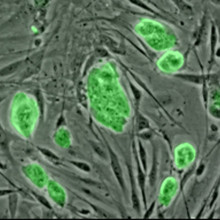
How do our cells know how old they are?
Steve - First of all, some cells in our body don't divide such as nerve cells and so they really aren't. They last our whole lives but even the cells that do turn over- a new cell is generated from the division of an existing cell. The age of an existing cell basically gets transferred. The new cell remembers how old the other cell was. One of the important things that is transferred are the chromosomes. The ends of the chromosomes - called telomeres - get shorter every time a cell divides. They are a very useful counting mechanism. These telomeres shortening is one of the important counting mechanisms that tells our cells how many times they've divided and how old they are.

Why does hair lighten in the Sun?
Ben - This is basically because hair is dead. Once it comes out of you, once it's grown, all the melanin it will ever have has already been put into it. It gets broken down by the sun but in your skin the melanin gets replaced when melanocytes put new melanin into your skin.
Related Content
- Previous Blindness, Bees and Breast Milk
- Next Use or lose your dopamine










Comments
Add a comment